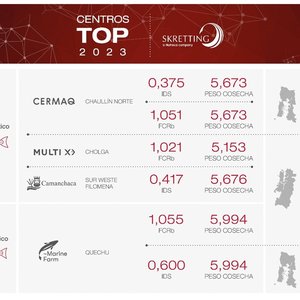So you think you know how to buy advertising space?
You just compare circulation numbers, right? If only it were that simple! Whether you rely on an advertising agency to place your ads or have a clued-up marketing department that makes the decisions – or even if you take off your sales manager’s or CEO’s hat and do the job yourself, you owe it to yourself to understand the pitfalls inherent in the task in order to make your ad budget work best for you.
Assessing your audience
Clearly your most important task is to find out if the magazine you are planning to run a campaign with is well read. Theoretically, all you need to do is divide the circulation number by the cost and you have the price per reader, and thus the value of the ad. Theoretically.
In print magazines, there is usually a claim made for circulation and readership.
In trade, or business-to-business magazines, (which are not on sale to the general public and the sort we are interested in here) circulation is the number of copies mailed out to a database, while readership is the number of readers assessed by a survey, and may include “pass-on” estimates – that is, the number of times a single copy is estimated to be passed on to another reader.
The circulation figure is often broken down into paid circulation, controlled circulation and requested circulation.
Paid circulation is just what it says: sent to a subscriber who has paid for it.
Controlled circulation means it is sent to people on a database chosen by the publisher.
Requested circulation means it was sent either for free or to a paid subscriber who asked for it.
Then there is Rolling circulation – this is a term that has cropped up recently and takes a bit of figuring out. We believe it means the total number of names on a database that receive a copy of the magazine during the year. In other words, if for example the “rolling circulation” claimed is 12,000 for a monthly magazine, that could mean that 1,000 copies are printed each month and go to a different circulation every time – so in a year, 12,000 people would be sent a copy once in 12 months. Or it might mean that 3,000 copies are printed and these are sent randomly to the 12,000 people on the circulation database.
Who gets it?
Most magazines will provide a breakout of demographic information about its readers, by job description, geographic location, business etc. These should not always be taken at face value. You need to know how this information was collected. Was it a requirement of subscription or was it a survey? If it was a survey, how credible was it? How many people were surveyed? What percentage responded? What were the questions? Ask! And study the data. Are these the businesses you want to target? Every copy that goes to the wrong demographic group wastes your money.
Prove it!
But how do you know if the numbers claimed are true?
The answer is to insist on proof.
Many U.S. magazines publish a mailing statement. This is required by the US Postal Service (USPS), in return for concessions on mailing cost. You can usually find it in smallish print towards the back of the final issue in a given calendar year.
Reputable magazines are usually independently audited. Look for the BPA BPA Worldwide or Audit Bureau of Circulations (ABC) symbols. Audit Bureau of Circulations (U.S.) Audit Bureau of Circulation (UK). If you are looking at U.K.-based magazines, your best friend is BRAD – British Rates and Data. British Rates and Data (BRAD)
You can look up a magazine in their annual directory or on line for a minimal cost – but look out for “Publishers statement” after the figures. That means that you only have the publishers’ word for it –and sadly, some publishers are less honorable than others.
How credible is the publication?
Does it matter if a magazine has a huge circulation if no one reads it – or worse, if it is perceived negatively by the industry and your company, by appearing in it, is tarnished by its poor reputation?
If a verified circulation is “requested” or “paid” then you have a good guide. Otherwise you really have no idea how many magazines were wanted or had a chance of being opened or if they went straight into the waste paper basket.
If you have been in the industry a while, don’t make assumptions about which magazines are read. The ones you like might not be the ones your potential customers see. In the end, the best way of knowing is to do your own research – ask your customers what they read.
Cyberspace
The internet is a new and scary place to many advertisers but like it or not, it is where your customers increasingly look to find information and it is where you need to be for them to find you.
There has been a huge swing towards the internet as a source of information in just the last couple of years. While there are still those who like to have real paper in their hands, there are few today who rely exclusively on print. In fact increasingly business people have become so dependent on their computers that they rely exclusively on electronic information sources for both general and industry news and technical information and product research.
And this is good news for advertisers. Websites, electronic magazines and newsletters generally provide a very effective medium for conveying your message and offer good value for money, since the medium eliminates the traditional publisher’s main costs: paper, print and postage.
So how do you assess internet advertising? Few B-2-B websites/newsletters are audited by the big audit companies because of the cost. However, most use tracking tools, which provide independent reports. Ask for the figures – or even the links to the reports. Depending on the sophistication of the tracking tools, demographic data may also be available. Ask.
Gobbledegook
If you are new to web advertising, a few words on the jargon:
Page views
Page views are most often used to assess traffic for the purpose of online advertising. It means a web page that has been viewed by one visitor
Unique Visitors
Unique Visitor refers to a person who visits a website at least once within a specified period of time. Unique visitors are counted only once no matter how many times they visit the site.
Hits or Page Hits
This is not a good indicator of traffic. It counts every item viewed on a website. So, for example, if you click on a page with four graphics, five hits will be recorded: one for the page and four for the graphics.
Cost Per Impression is a term sometimes used with web banners. The Cost Per impression is often measured using the CPM (Cost Per Thousand impressions.) So a CPM of $5 means $5 per 1,000 displays of a banner: the Cost Per Impressions is half a cent.
Impression refers to the number of times a banner is displayed.
Another way of charging is by CPC - Cost Per Click. You pay an agreed amount for each click-through (a click on an ad which takes the viewer to your site).
The Click-Through Rate (CTR) is the number of people who click on a banner, divided by the number of displays of the banner, represented as a percentage.
e.g. 50 people click on an ad that has been shown 1,000 times: 50/1,000 x 100% = 5%.
Few B-2-B websites are this sophisticated however and, often out of deference to their traditionally minded advertisers, keep things simple with a flat rate fee.
As good as print?
Providing that the electronic publication/website has good “traffic” it will stand up well against print publications:
- Rates are generally better, so they offer better value for money.
- People who visit a website have gone there seeking information. (With a magazine you don’t know how many copies were even opened).
- Consistent traffic levels mean people keep coming back, so you know they read the content.
- Availability: your banner/website is on-line 24/7 so customers can contact you with a click, while they are in a buying mood. Or know where to look when they are ready.
- You can link your advertisement to whatever information you like – that means you can change the copy whenever you like or expand it almost infinitely – you aren’t confined to a single page in a periodical publication. If you are creative, you can link your ad to a video demonstration of your product or audio tutorial on your website – so your ad can be so much more than the banner you are paying for.
In our own industry – one that straddles aquaculture and feed production and yet is a unique sector all of its own – we have the advantage of being a small family. Word spreads fast and in the final analysis, your choice of how to spend your advertising budget will probably boil down as much to recommendation and personal experience, as it does to numbers. Facts and figures make good business sense but who provides the best service, who gives the best all round support and who you know you can trust make for a successful relationship. And we believe that these traditional values still make an important contribution to a sound business decision.







